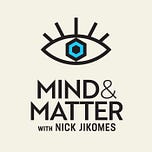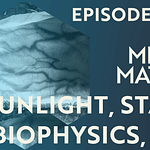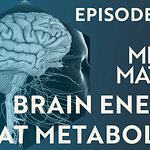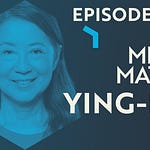Wide release date: June 29, 2025
Episode Summary: Cell Biologist Dr. Bill Bement explains the dynamic world of the cell cortex, discussing how actin filaments and microtubules drive processes like cell division and wound healing through self-assembly and self-organization; energy dynamics of these processes; the role of rho GTPases in patterning; the implications for diseases such as cancer and muscular dystrophy, using vivid analogies and video demonstrations to make complex concepts accessible.
About the guest: Bill Bement, PhD is a cell biology professor at the University of Wisconsin-Madison, where he has studied cellular processes for over 30 years. He leads a lab focused on the cell cortex, investigating cell division and repair. His work emphasizes self-organization and cytoskeletal dynamics, contributing to insights into diseases like muscular dystrophy.
Discussion Points:
The cell cortex, the outer layer of a cell, includes the plasma membrane and underlying proteins like actin and myosin, which enable dynamic shape changes.
Actin filaments self-assemble without energy input, growing and shrinking to facilitate cell movement and division, while microtubules, stiffer hollow tubes, aid in chromosome separation.
Self-organization in cells, driven by energy-dependent feedback loops, creates complex patterns like mitotic spindles, as shown by experiments with DNA-coated beads forming spindle-like structures.
Cellular wound healing involves concentric rings of rho GTPases and actin, closing wounds rapidly, a process critical for surviving natural damage from mechanical stress or toxins.
Energy costs of cytoskeletal rearrangements are significant but likely less than protein synthesis, though precise measurements remain challenging.
Cancer metastasis may rely on enhanced cell repair, allowing metastatic cells to survive mechanical damage while squeezing through tissues.
Muscular dystrophy involves excessive damage or impaired repair, highlighting the importance of cell repair mechanisms.
Bement’s lab is developing tools for synthetic self-organization, aiming to manipulate cellular processes to address repair deficits in diseases.
Related episode:
M&M 220: Cell Death, Oxidative Stress, PUFAs & Antioxidants | Pamela Maher
*Not medical advice.
Full video version: [YouTube]
Support M&M if you find value in this content.
Episode transcript below.
Episode Chapters:
00:00:00 Intro
00:01:22 Guest Introduction & Background
00:04:05 Cell Cortex & Cytoskeleton Overview
00:09:26 Actin & Myosin Dynamics
00:15:31 Microtubules & Structural Roles
00:20:09 Self-Assembly Mechanisms
00:27:29 Self-Organization & Emergent Patterns
00:34:09 Cellular Patterning & Rho GTPases
00:41:33 Wound Healing Visualization
00:49:43 Cell Division & Rho Waves
00:57:03 Protein Localization & Pattern Formation
01:04:54 Energy Costs of Cytoskeletal Processes
01:10:58 Membrane Damage & Lipid Peroxidation
01:17:39 Cancer & Enhanced Cell Repair
01:22:00 Current Lab Research & Synthetic Self-Organization
01:27:08 Final Thoughts
Full AI-generated transcript below. Beware of typos & mistranslations!
Listen to this episode with a 7-day free trial
Subscribe to Mind & Matter to listen to this post and get 7 days of free access to the full post archives.















